CATALOGUES
WHITE PAPERS
PRESS RELEASES
octobre 18, 2019
Rotating seal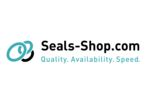
janvier 14, 2019
Piston gasket
Without the proper seal, the failure of a hydraulic cylinder, and thus the entire hydraulic system, is all but guaranteed.
As such, it is critical to make sure that the right seal is selected based on factors such as how the cylinder is expected to operate as the piston is pushed down the cylinder bore.
As a necessary component of fluid sealing in hydraulic cylinders, piston seals, also known as piston rings, are designed to seal in fluid, thus preventing the flow of fluid across the piston. This is made possible when the piston seal secures against the cylinder bore from inside the hydraulic cylinder, meaning that pressure will build up on one side of the piston.
Yet, because hydraulic cylinder seals are found in everything from machine tools, trucks and off-highway vehicles to injection mold machines, it stands to reason that a seal will sometimes need to conceal pressure from both sides of the piston.
This demonstrates a scenario where the choice between single-acting hydraulic seals versus double-acting hydraulic seals becomes crucial.
Single-acting vs. Double-acting Piston Seals
Single-acting piston seals are designed to keep pressure on one side of the piston without leakage. Because the seal operates in one direction (unidirectional), the pressure is applied on one side only.
Double-acting piston seals, on the other hand, are designed to conceal pressure from both sides, which means that they are designed to be bidirectional.
Selecting between single-acting and double-acting piston seals has everything to do with the intended use of the system and the direction that the system will be operating in. As such, choosing wisely can make all the difference in the life of a cylinder and thus help avoid unwanted machine downtime.
Helping to make that decision easier is Seals-Shop, with a variety of Trelleborg piston seals to fit just about any application. Made from high-quality materials that are durable in most conditions, Trelleborg seals have the answer to just about any question concerning hydraulic, pneumatic and mechanical seals. Need installation help? Each product description on Seals-Shop.com includes an easy-to-follow diagram detailing the installation steps for each specific seal. For more information, visit Seals-Shop.com.
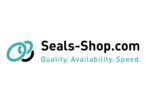
août 30, 2018
Sealing ringConsidering that a seal failure in almost any number of hydraulic system applications will generally result in total machine failure, sealing a hydraulic cylinder is a critical matter.
When replacing a failing seal it is important to make sure that certain critical factors are considered before making a selection. To make the right selection, it is important to first understand how a hydraulic cylinder is sealed.
Particularly challenging for seals are hydraulic applications where fluid must be kept from leaking from a cylinder. Add to that the high pressures, transverse forces and extreme temperatures within the cylinder, and the challenge is amplified. As such, preventing leaks becomes only one of several concerns surrounding hydraulic seals.
Hydraulic cylinder seals, found in everything from machine tools, trucks, off-highway vehicles and injection mold machines, serve a variety of functions. Most critically, this includes closing a gap, making sure that the system is leak-tight and capable of transferring forces within the system.
To ensure the long lifetime and low maintenance of a hydraulic system, it is vital to consider the hydraulic seals that are best suited to help protect the cylinder from damage.
Hydraulic sealing systems can include:
A failure of any of these components could result in an all-out failure of the machinery and thus causing downtime.
As such, it is important to consider pressure, hardware and design requirements of a hydraulic seal when making a selection.
PressureDifferent applications will have different pressure requirements. When considering pressure limits of the application, first consider the required megapascal (MPa) pressure unit.
HardwareHardware is also a crucial consideration for hydraulic systems. Without quality hardware, the cylinder will only offer sub-par system performance and abbreviated service life.
DesignDesign considerations will greatly impact seal selection, and these considerations are dictated by factors such as required speed, efficiency, compliance with standards and reliability. To determine what seal is necessary for what application, ask the following questions when making a selection:
The right answer to these questions are seals from Seals-Shop. Made from materials such as polytetrafluoroethylene (PTFE)-based Turcon or polyurethane (PU)-based Zurcon, hydraulic rod and piston seals offered by Seals-Shop.com are durable and require only minimum maintenance. Likewise, they are compact, making them easy to install. Replacement parts can be easily purchased online with the possibility of very quickly delivery.
About Seals-ShopSeals-Shop, the online shop of Trelleborg Sealing Solutions products, offers many hydraulic, pneumatic and mechanical sealing solutions for a variety of applications, whether new or for maintenance. For more information, visit Seals-Shop.com.

août 06, 2018
Sealing ring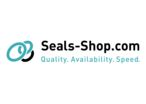
juillet 31, 2018
O-ringAn O-ring is a loop of elastomer with a round cross-section designed to be seated in a groove/gland and compressed during assembly, creating a seal between two or more parts. O-rings cover a wide range of applications and are used in all industries, for both the maintenance of older products and for new product designs. The relatively low-production costs and ease of installation and use have made the O-ring the most widely used seal. Practically all liquid and gaseous media can be sealed using one of the many elastomeric O-rings available.
ApplicationsThere are several essential specifications for selecting the correct O-rings in hydraulic systems. The inside diameter, outside diameter and cross section define the dimensions of an O-ring. The inside and outside diameters are the distances from the center to the O-ring’s inside and outside surface respectively. The cross section is the difference between the outer and inner diameters. O-ring inside diameters and outside diameters can vary significantly, from a few millimeters to a meter or more. Be sure to leave some space when specifying O-ring inside diameter to account for swelling and possible thermal expansion.
Avoid stretching the O-ring more than five percent, if possible, as stretching can cause the cross section of the O-ring to flatten. O-ring cross sections tend to vary less, from a few millimeters to tens of millimeters. When selecting an O-ring for your hydraulic application, it is very important to know the depth of the gland so that the O-ring selected has the appropriate cross section to avoid extrusion and tearing and to ensure a proper seal.
MaterialsO-rings come in a variety of materials, including nitrile rubber (NBR), ethylene propylene diene rubber (EPDM), fluoroelastomers (FKM) such as Viton®, silicone rubber (VMQ) and others. NBR has excellent resistance to hydraulic fluids and can be used in the temperature range of -35° C to +120° C. NBR is a copolymer of butadiene and acrylonitrile that becomes more resistant to hydraulic fluids as its nitrile component increases, but it also becomes less flexible. Although NBR does not possess good resistance to ozone, sunlight or weather, it has excellent resistance to compression set, tear and abrasion. O-rings made of NBR generally are an excellent choice for hydraulic applications.
FeaturesEPDM O-rings have excellent resistance to heat, water, steam, ozone and sunlight. EPDM O-rings are particularly useful when sealing phosphate-ester hydraulic fluids and may be appropriate for some applications in place of NBR. FKM (Viton®) O-rings have very high resistance to high temperatures, greases, fuels, silicone oils and many other materials and are well-suited for aerospace applications. Increasing fluorine content in FKM increases chemical resistance while low-temperature characteristics regress. FKM can be used with non-flammable hydraulic fluids and may be an appropriate choice for hydraulic applications under certain circumstances. Finally, VMQ has good ozone and weather resistance as well as good cold flexibility and high heat resistance, though it is susceptible to superheated steam. VMQ O-rings have relatively low tensile and tear strength and are susceptible to wear. Although excellent for many applications, VMQ is not usually used for hydraulic O-rings.
Another set of important O-ring specifications are the maximum pressure and the operating temperature range.
Generally, maximum pressure tends to be expressed in megapascals (MPa) and operating temperature range is expressed in degrees Celsius. Depending on the O-ring material, maximum pressure can be as high as 25 MPa and operating temperature ranges can vary from -40° C to +200° C. It is very important when selecting an O-ring that the maximum pressure and operating temperature range encompass the extremes of the O-ring application. O-ring chemical resistance, flexibility, tear resistance, abrasion resistance, weather resistance and other properties can be compromised if an O-ring is exposed to conditions beyond its maximum pressure or operating temperature range.
Quad-Rings®
Some applications involving pressures greater than 5 MPa may be ideal for a backup ring. When internal pressure becomes too high, an O-ring may extrude and quickly lose material through wear. Seal failure usually follows fairly quickly afterward. A backup ring is a ring of hard, extrusion resistant material that fits between the O-ring and extrusion gap, thus preventing O-ring extrusion. This can be a cost-effective alternative to more durable yet more expensive materials. An alternative to O-rings that can also be used with backup rings is the X-ring, or Quad-Rings®. Quad-Rings® have two sealing areas per side as opposed to the one for O-rings. As a consequence, Quad-Rings® require less deformation to maintain an effective seal. Less deformation means less friction and wear, which gives Quad-Rings® a longer seal life compared to O-rings. Quad-Rings® come in a variety of materials and sizes and can be an alternative to O-rings for hydraulic system sealing.
The specifications of inner diameter, outer diameter, cross section, material, maximum pressure and operating temperature range are critical to identifying the correct O-ring for your hydraulic application. Backup rings can help prevent extrusion in high-pressure applications while Quad-Rings® offer a longer-life alternative to O-rings for particular applications. Although O-rings are usually a very small and inexpensive part of your hydraulic system, they can be critical to its performance and are worth researching and understanding so that the correct O-ring (or Quad-Rings®) is selected and installed. Putting in the time to understand the O-ring that you need now may buy you years of operation for your hydraulic system. If you are unsure of the article number of your seal, product finders or some online-shops (such as seals-shop.com) quite often have the option to search by the aforementioned criteria when applying filters during product selection.
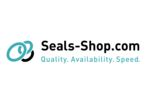
juillet 12, 2018
ConditioningThe two main functions of a seal are to minimize or prevent leakage of fluid while keeping dirt and debris out. If a seal is not made as per functional requirements, or is installed and maintained improperly, it may fail and cause a loss of fluid.
To function properly seals must withstand extreme temperatures, high pressures, chemicals and contaminants. Seals can be composed of a number of different materials, and choosing the right seal for the job is not a trivial task; it takes consideration and knowledge of not only the machine or equipment that the seal will reside on or in, but also the potential effects of the seal’s environment.
Preventing Seal Failure
Seal failure will lead to equipment problems and costly downtime. And while they are durable if used in proper applications, in the wrong setting they can cause serious problems.
Even if a hydraulic system continues to operate safely when leaking, leaks will be costly. Six drops of oil a minute leaking from a connector in a hydraulic system — assuming the volume of each drop is 0.5 ml — is 179.8 liters over the course of a year and more than a hundred euros’ worth of replacement oil. A steady stream leak of 0.16 cm diameter adds up to 1,968 liters of lost oil per year. Now multiply that by the number of connectors used and it adds up quickly.
Such issues can be prevented, however, with an understanding of the causes of seal failure and how to prevent them. So while all seals eventually wear out, the most common causes of premature failure include improper installation, contamination, excess temperature, pressure or speed and chemical erosion. Let’s look at these concerns one at a time:
Improper installation. An improperly-installed seal can fail in a number of ways, due to improper handling, contamination or even being an incorrect fit for the application. Improper installation can result in tears or nicks to the seal, consequently leading to failure. A seal can even be installed backwards, resulting in immediate leaks.
The location where the seal will be housed must be measured correctly so that it is a precise fit. Without the correct size, the seal can either break (if too big) or not seal at all (if too small). For example, an O-ring seal size is determined by the seal bore (the diameter of the hole in the housing where the seal will be fitted), the seal outer diameter and the seal width (the total width of the seal). Seals are sized to fit a certain shaft or rod diameter and are identified as such. A seal should only be used in the dimensions that it is designed for.
Contamination. Metallic shavings, powder, dirt, mud, grit and other minute solid particles can be picked up during operation and damage the seal, possibly getting into the protected area. Causes can include internal cylinder contamination, cylinder wear over time, clogged filters, dirty oil and poor wiper performance. Any liquid used in these applications should be properly filtered of debris.
Excess temperature. Heat can cause hardening of the elastomer and can cause the seal to degrade, eventually becoming brittle and cracking apart. Material can break off, causing further contamination. There is generally a stated temperature range that is optimum for a particular seal’s use and should be adhered to. Increased temperature also accelerates aging; the temperature of the application and constant friction can decrease a hydraulic seal’s life expectancy significantly. For instance, if axial cracks at the sealing edge are visible when replacing a seal, the seal may have been exposed to excessively high temperatures. On the other hand when the operating environment is too cold a seal may become brittle.
Pressure. When a seal is stressed beyond its limits and fails, it could be the result of over-pressurization. Failure modes range from cracking to complete structural failure. Check for pressure spikes and make sure the seal design is rated for the pressure in the given application. Like temperature, recommended pressure for optimum performance is specified for each seal by the supplier. Seals-Shop products are specifically intended to suit a variety of hydraulic applications, from light-duty linear hydraulic to heavy-duty rotary seals and static applications and pressure and temperature specs can be easily identified during product selection. When recommended pressure is exceeded a seal wears faster. Additionally, using the wrong lubricant or oil may result in the fluid density becoming too thick or slippery, causing incorrect hydraulic pressure to be applied to the seal.
High speed rotation. If used in an environment that requires a certain speed (like a rotating shaft), the seal may not withstand the rotation speed. Seals are designed to ride on lubrication between the seal lip and a moving surface. The thickness of the lubricating film establishes the level of friction. When velocity increases, friction decreases initially, but over time at an increased velocity the frictional forces will climb, causing seals to wear. Speeds under and over the recommended range cause friction values to rise sharply, impacting the seal material.
Chemical deterioration. A corrosive fluid or incompatible chemical composition, such as oil additives, can cause the breakdown of seal material. This can occur when the improper seal material is chosen for an application. Connecting a seal to a hydraulic system using chemical fluid may create material fractures or extrusions to the material. Chemical deterioration can manifest itself in the swelling or shrinking of the seal.
Seals-Shop SolutionsLeakage prevention involves not only selecting and installing the right component for the specific application, but maintaining the conditions that allow the component to continue performing without leaking. For optimum component performance, designers must be aware of the products available that achieve zero leakage for each specific application and how to install them. Products exist to reduce or eliminate the problem of leakage, but the key is in selecting the right product — and installing it correctly — for the application at hand.
Seals-Shop offers a wide range of Trelleborg Sealing Solutions products to fit applications ranging from light-duty linear hydraulics to heavy-duty seals. With materials such as high-performance thermoplastics, polymers and elastomers, all seals on the online platform are specifically developed to help a system reach its optimal performance and maximum durability with minimum maintenance. The company is based in Stuttgart, Germany, and serves many areas of industry, including service and maintenance, repair, manufacturing, wholesale and research and development.
O-rings, the most popular seals, are used mainly in static sealing applications (meaning there is no movement between the sealing surfaces or between the seal surface and its mating surface). Seals-Shop offers O-rings with cross sections in the range of 0.8 to 8.4 mm and inside diameters up to 810 mm. O-rings can be used to seal practically all liquid and gaseous media and they are available in elastomeric and other materials, including ethylene propylene diene monomer (EPDM) rubber, fluoroelastomers (FKM) and nitrile butadiene rubber (NBR).
Hydraulic rod seals prevent fluid leakage from within the cylinder to the outside. The online platform offers a wide range of rod seals for both single-acting and double-acting systems. Rod seals are available as Turcon® polytetrafluoroethylene (PTFE) products and Zurcon® polyurethane (PU) U-cups, where the focus of the design is on low friction, compact form and simple installation.
Hydraulic Piston seals are installed in the cylinder head and seal against the cylinder bore to ensure that pressurized fluid does not leak. This allows pressure build up on one side of the piston, making the cylinder extend or retract. Piston seals can be double-acting (pressure on both sides) or single-acting (pressure on one side) and are available from Seals-Shop in a variety of materials.
Wear rings guide the piston and piston rod within the hydraulic cylinder, preventing metal-to-metal contact. The online platform offers Slydring® hydraulic wear rings in three different material types: Turcite® for low- to medium-duty applications where there are limited radial forces; HiMod® for medium- to heavy-duty applications; and Orkot® materials for heavy-duty applications where there are high radial forces.
For more technical information on the handling of seals as well as installation guides, visit Seals-Shop.com.
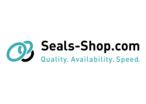
juillet 10, 2018
Stem gasketThe rod seal is a crucial element in fluid power systems, as it prevents fluid leakage from the hydraulic cylinder. Such leaks undermine equipment performance and service life but can be avoided by attention to seal characteristics that meet the specifications for a given application.
The appropriate elastomeric rubber for fluid movement, vibration isolation or other use is defined based on system pressure, chemical compatibility, temperature regime, friction and economic considerations for single- or double-acting seals. The distinguishing requirement for a single- or double-acting seal is pressure direction: Single-acting seals take pressure from one side only and are used between fixed components while double-acting seals handle pressure from both sides and are installed between parts that are in relative motion.
Rod seals supplied by Seals-Shop are available as O-ring energized polytetrafluoroethylene (PTFE) products and polyurethane (PU) U-cups, all from Trelleborg Sealing Solutions. The design and material focus is on low friction, compact form and simple installation.
Turcon®, a proprietary PTFE-based sealing material, is compatible with almost all chemicals, making it suitable for use in equipment where seals are likely to be exposed to demanding media. These materials deliver excellent low friction and self-lubricating characteristics for dynamic and rotating applications. The low-friction properties reduce power loss while positional accuracy and control are enhanced by the elimination of stick-slip movements and conditions.
Different grades made with special processing methods and incorporating fillers can be fabricated to achieve specific operating properties. For example, Turcon® Stepseal® 2K is a single-acting O-ring energized rod seal designed to provide high static and dynamic sealing results. It can be installed together with other seals in a tandem configuration for advanced static and dynamic tightness and is marked by high-extrusion resistance, low friction with no stick-slip, minimal break out force and high wear resistance.
A double-acting O-ring energized rod seal for dynamic applications also offers low friction with no stick-slip, minimal break out force and high wear resistance. The trapezoidal cross-section of the Turcon® Glyd Ring® T provides very good static leak-tightness and the angles of each lip are designed to provide improved leakage control and better resistance to extrusion.
Another high performance polymer family for sealing service is available in a range of compounds, additives and hardness levels to optimize sealing element compatibility and performance with diverse industrial fluid media types. The Zurcon® line of injection and cast molded polyurethanes is designed to meet the rigorous demands of hydraulic and pneumatic sealing systems. High mechanical strength and abrasion resistance as well as the ability to withstand petroleum oils are hallmarks of this material.
The Zurcon® Rimseal is a single-acting rod seal energized by an elastomer O-ring, providing high static and dynamic leak tightness and high wear resistance. It functions as a suitable secondary element to ensure reliable sealing of thin oil films at low secondary pressures.
The Zurcon® U-Cup RU9 can be specified for applications requiring very high sealing performance with lower friction and lower heat generation than standard U-cups. The trimmed lip design allows for outstanding wear and extrusion resistance. Compatible with virtually all media, it also has a wide operating temperature range (from minus 35 degrees Celsius to 110 degrees Celsius).
Proper hydraulic-cylinder operation hinges on choosing the best seal for the job. A good working knowledge of available seal options and application parameters — such as fluid pressure range, temperature range, stroke speed and fluid type — helps achieve that goal. For more information on rod seals and for installation guides, you can visit Seals-Shop.
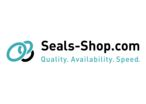
Buyers
Find your suppliers Complete your request and let our teams find you the best deals available.Suppliers
Find your future clients List your products and services to enhance your web presence and receive qualified enquiries.